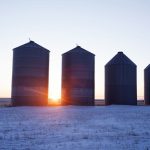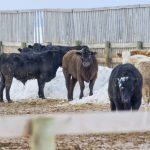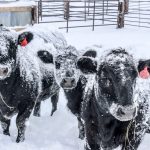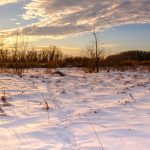Reading Time: 2 minutes Despite recent weather bringing much-needed moisture into southern Alberta, dryness remains a concern in the region weeks before the start of seeding.

Feed grain weekly outlook: Growers looking at the skies, prices
Barley prices should decline in later spring as growers sell, analyst says

Prairie forecast: Stormy start in the east, warming in the west
Issued March 6, covering March 6 to 13, 2024
Reading Time: 3 minutes After what was probably the biggest storm system of the winter, it looks like this forecast period will see a break from the active weather for the most part.

Klassen: Grassers and herd rebuilding confidence keeps feeders elevated
Major grazing regions of Western Canada receive more than double of normal precipitation in last month
Reading Time: 2 minutes The major grazing regions of Western Canada have received over 200 per cent of normal precipitation over the past 30 days. Grassers were red hot. Demand has also increased for herd building heifers which has diminished supplies for finishing feedlots.

Prairie forecast: Storm system heads for southern Prairies
Updates forecast issued Feb. 29, covering Feb. 29 to March 6, 2024
Reading Time: 2 minutes The weather models have come into fairly good agreement for the storm system forecasted to impact much of the southern prairies over the next 24 to 48 hours. An area of low pressure is developing over Wyoming with an inverted trough stretching northwestwards.

Feed barley stuck in downtrend
Canada has imported 564,900 tonnes of U.S. corn since Sept. 1
Reading Time: 2 minutes The Western Canadian feed market remains under pressure, with barley bids stuck in a steady downtrend.

Alberta to ban renewables projects on prime agricultural land
Rules could create a backdoor land ban, analyst says
Reading Time: 2 minutes Alberta will ban renewable power projects on prime agricultural land and erect buffer zones to ensure wind turbines do not spoil scenic views, the provincial government said on Wednesday.

Prairie forecast: More much-needed moisture expected
Issued Feb. 29, covering Feb. 29 to March 6, 2024
Reading Time: 4 minutes Cold Arctic air has invaded the Prairies much to many people’s surprise. We have gotten so used to mild spring-like weather that some people may be put off that winter has returned. For those who read my last column, this type of weather shouldn't be surprising since we are now moving into what can be the snowiest time of the year.

Klassen: Statistics Canada confirms lower feeder cattle supplies
Precipitation in Alberta, Saskatchewan increases demand for grassers
Reading Time: 2 minutes Compared to last week, Western Canadian yearling or backgrounded steers prices were quoted $5 to $8 higher; yearling or backgrounded heifers were unchanged to $4 higher. Calves were trading $4 to as much as $10 higher.

Prairie forecast update: Storms roll in
Updates forecast issued Feb. 21, 2024
Reading Time: 2 minutes The weather models are coming into agreement with up coming storm system. The low was forecasted to develop over southern Alberta on Sunday with widespread snow developing to the north and west of the low. This placed the Edmonton region in the main snow band with 10 or so centimetres forecasted to fall across this region. The snow should move out quickly on Monday as cold arctic air pours southwards behind the low dropping temperatures to below average, but only for a couple of day.

Feed barley under pressure, but opportunities available
Corn downturn likely to keep feedlots looking to extend coverage
Reading Time: < 1 minute Feed barley bids in Western Canada remained under pressure in mid-February amid continued imports of corn from the United States and the relatively mild Prairie winter. However, localized spot opportunities do pop up occasionally.


